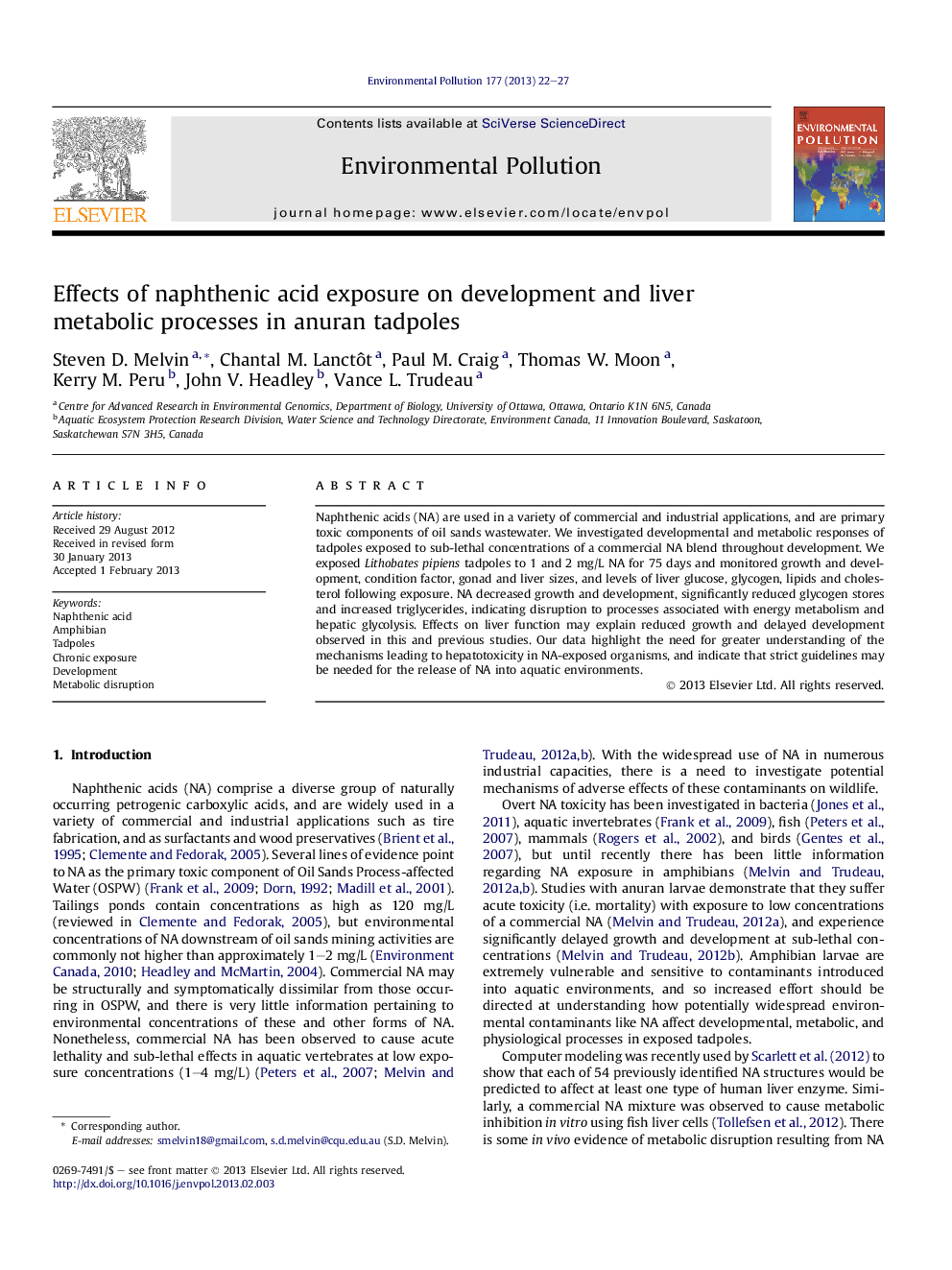| Article ID | Journal | Published Year | Pages | File Type |
|---|---|---|---|---|
| 4424607 | Environmental Pollution | 2013 | 6 Pages |
Naphthenic acids (NA) are used in a variety of commercial and industrial applications, and are primary toxic components of oil sands wastewater. We investigated developmental and metabolic responses of tadpoles exposed to sub-lethal concentrations of a commercial NA blend throughout development. We exposed Lithobates pipiens tadpoles to 1 and 2 mg/L NA for 75 days and monitored growth and development, condition factor, gonad and liver sizes, and levels of liver glucose, glycogen, lipids and cholesterol following exposure. NA decreased growth and development, significantly reduced glycogen stores and increased triglycerides, indicating disruption to processes associated with energy metabolism and hepatic glycolysis. Effects on liver function may explain reduced growth and delayed development observed in this and previous studies. Our data highlight the need for greater understanding of the mechanisms leading to hepatotoxicity in NA-exposed organisms, and indicate that strict guidelines may be needed for the release of NA into aquatic environments.
► We exposed Lithobates pipiens tadpoles to 1–2 mg/L NA in the laboratory. ► We monitored survival, growth and development for 75 days. ► We measured liver glycogen, glucose, triglycerides, and cholesterol levels. ► NA significantly reduced growth and development compared to controls. ► NA significantly reduced glycogen levels and increased triglycerides.
